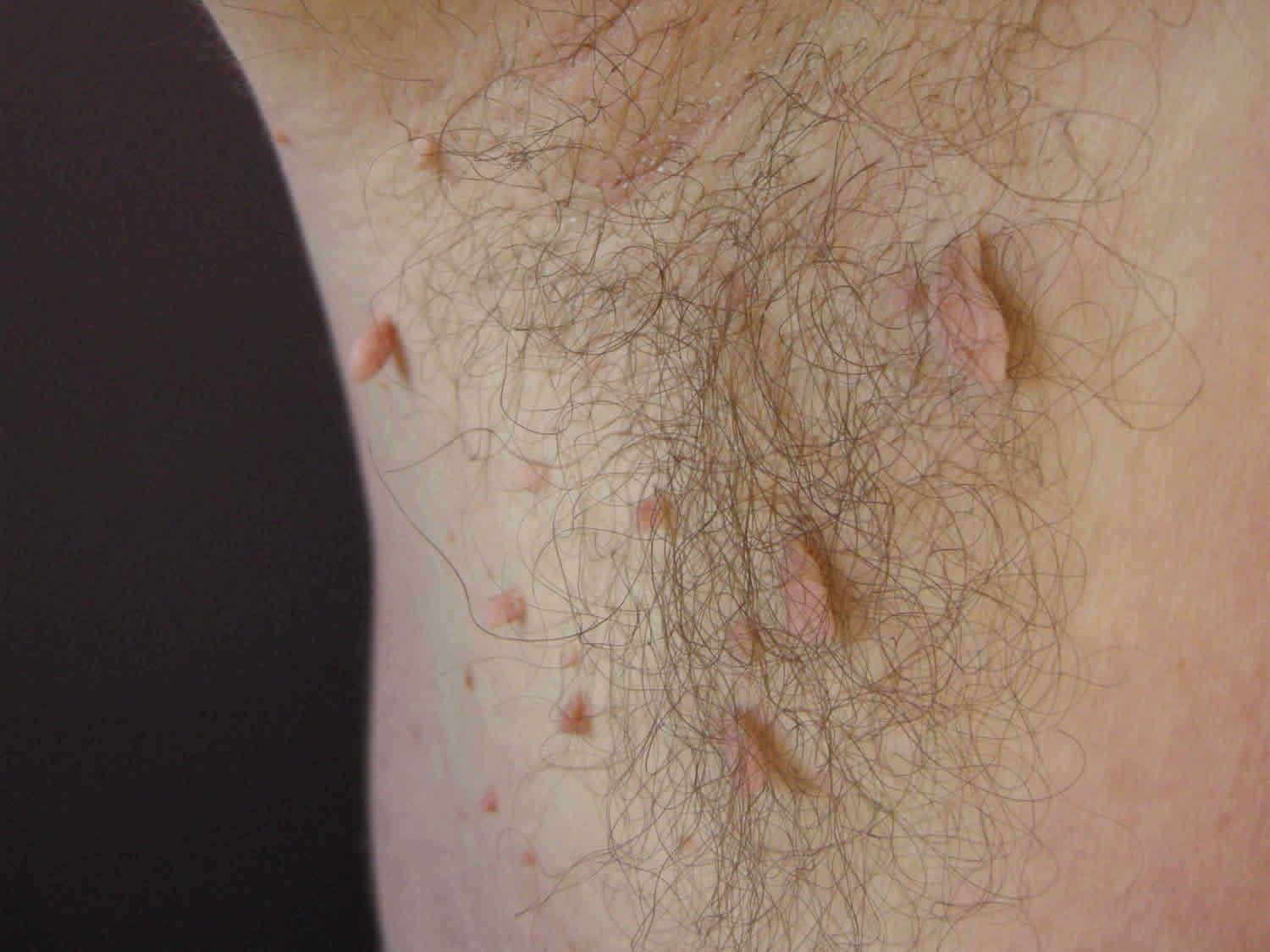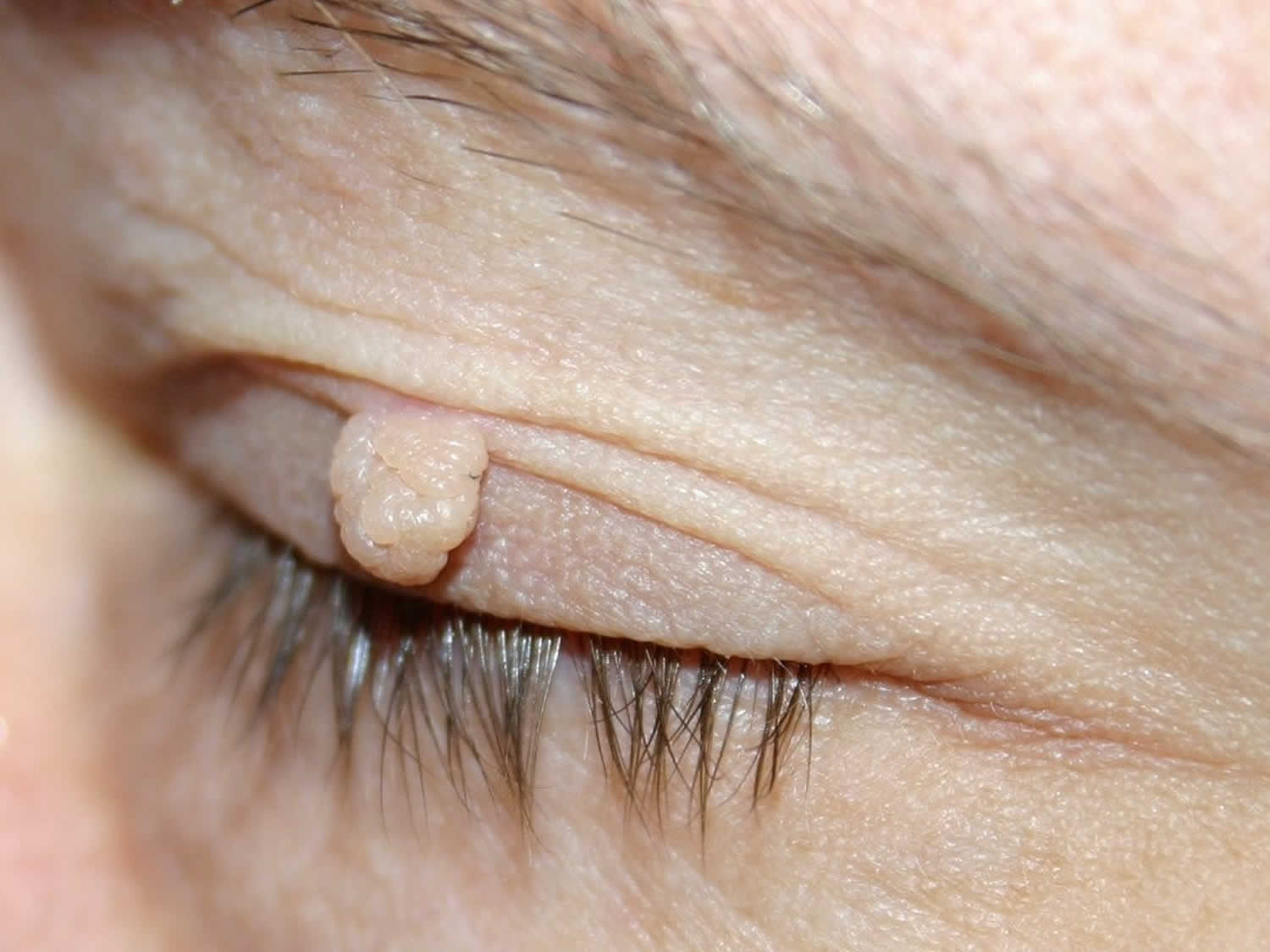Acrochordon
Acrochordon commonly called skin tag, is a common soft harmless lesion that appears to hang off the skin. Acrochordon skin tags are made up of loosely arranged collagen fibers and blood vessels surrounded by a thickened or thinned-out epidermis. Acrochordon is also described as:
- Papilloma
- Fibroepithelial polyp
- Soft fibroma
- Pedunculated (this means it is on a stalk)
- Filiform (this means it is thread-like)
Acrochordon develops in both men and women as they grow older. Acrochordons are skin colored or darker and range in size from 1mm to 5cm. Skin tags acrochordon are most often found in the skin folds (neck, armpits, groin). Acrochordon tend to be more numerous in obese persons and in those with type 2 diabetes mellitus.
Figure 1. Acrochordon skin tag
Acrochordon causes
It is not known what causes acrochordon skin tags. However, the following factors may play a role:
- Chaffing and irritation from skin rubbing together
- High levels of growth factors, particularly during pregnancy or in acromegaly (gigantism)
- Insulin resistance (syndrome X)
- Human papillomavirus or HPV (wart virus).
Skin tags occur when extra cells grow in the top layers of the skin. They tend to develop when the skin rubs against itself, so are more common in people who are overweight and therefore have folds of skin.
They grow both in men and women and are more common in older people and people living with type 2 diabetes. Pregnant women are also more likely to develop skin tags, although they usually disappear after the baby is born.
Acrochordon symptoms
Most skin tags are painless and don’t cause any symptoms. But if they rub on clothing or jewellery they may get sore and bleed.
Skin tags look different from warts and other benign skin lesions because of the small stalk that attaches them to the skin. Warts tend to be flat, while skin tags hang off the skin.
If you ever notice a new spot or growth on your skin, you should always see your doctor to confirm what it is.
Acrochordon treatment
Skin tags can drop off by themselves over time. If you decide to have a skin tag removed – for example, because it is bothering you or you don’t like its appearance – talk to your doctor.
It’s not a good idea to try to remove skin tags by yourself since they can bleed heavily or get infected. If you have a very small skin tag, you could ask your doctor how to remove it at home.
You can buy solutions from a pharmacy or online to freeze off skin tags, in the same way as you remove a wart at home. There are also many suggestions online for removing them naturally – for example, by using tea tree oil or apple cider vinegar. There is no scientific proof that these methods work. It’s always best to ask your doctor first.
Acrochordon skin tags can be removed for cosmetic reasons by the following methods:
- Cryotherapy (freezing them with liquid nitrogen)
- Surgical excision (cutting them with scissors or a scalpel)
- Electrosurgery or diathermy (burning them with electrical energy)
- Ligation (a suture is tied around the neck of the skin tag to stop the blood flow).






